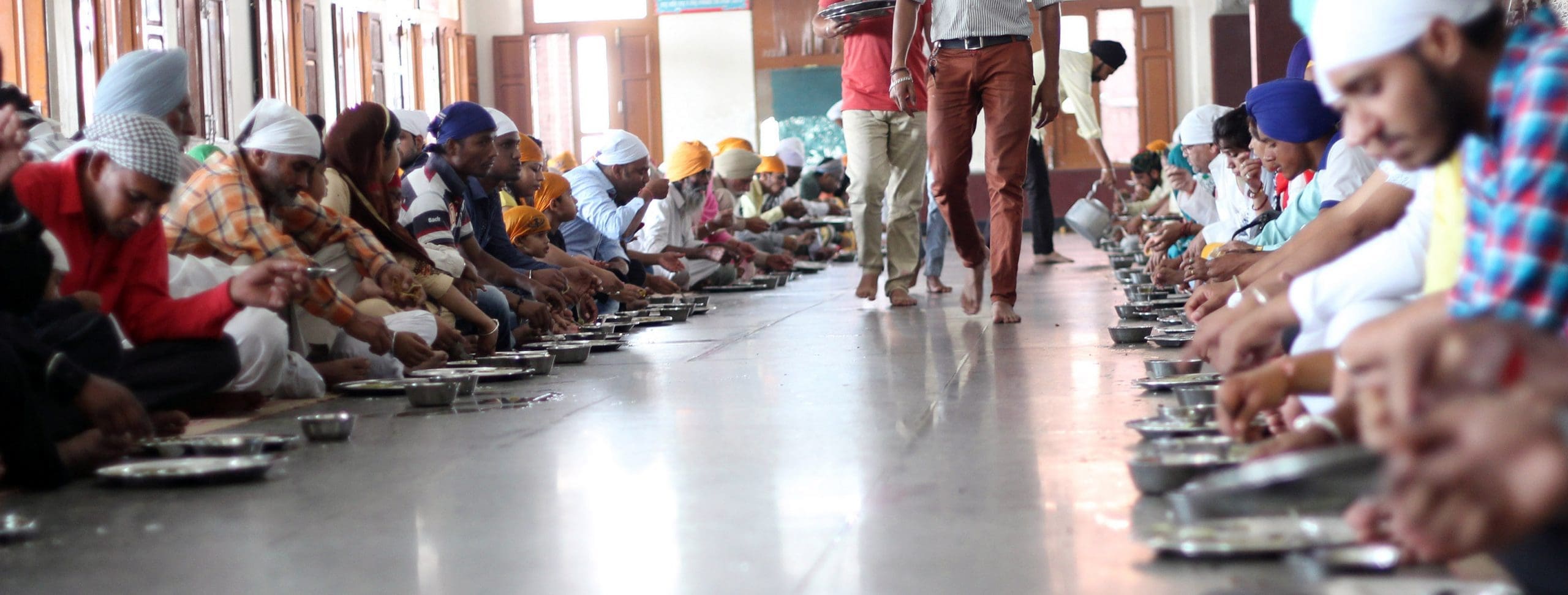
Eating langar at a gurudwara is nothing short of divine experience, and this has nothing to do with the fact that it’s free of charge. It serves the purpose of bringing people closer and expressing oneness among all. Isha Sehmbey comes back completely satiated and feeling one with God.
The sound of kirtan (prayer songs) rings through the compound, and the warm aroma of freshly cooked food wafts from across the kitchen. Faith and food go hand in hand here, and devotees move from the dining area to the temple with a sense of reverence.
The Sikh Langar, or free kitchen, is open to Sikhs as well as non-Sikhs, has become an intrinsic part of Sikh temples. It was started by the first Sikh Guru – Guru Nanak – to spread the feeling of equality and oneness among all who enter the gurudwara. It also helps if your stomach is full to ultimately connect with the divine.
Photo by Sushant SharmaThe grand langar dining hall
It is essential to dress appropriately and cover your head at all times is mandatory. After paying your respects at the temple and enjoying the delicious Kada parshaad, you can go to the dining hall where langar is served.
The dining hall is a big open space where narrow red carpets are lined up in rows. You have to sit cross-legged so wearing comfortable clothes is advisable. The best seats are at the two ends of the row because meals are served from these two points going towards the middle. So try and grab a place either at the beginning near the entrance or towards the end, which is often near the kitchen. This way, you get served quicker, and while it’s still hot.
The dining hall is run in a very organised fashion by volunteers or the gurudwara staff. They start by handing out dishes and other cutlery after everyone has been seated. The menu is mostly standard with few variants. Salad includes tomatoes, onion and radish soaked in lime and spices. Then there are chapattis/roti (Indian bread), black lentils and cauliflower with potatoes. Sometimes there’s curd or raita (curd mixed with chopped onions and tomatoes). Although dessert is not a regular feature in the menu it is always included during festivals. A regular dessert option is sweet saffron rice or kheer (rice pudding).
Some words of advice though: Remember to start your meal only after you have been served everything, except the dessert. Another important rule is to extend both hands while taking chapattis. This is a way to show respect to the food. Although food is unlimited and no one is refused a second or third helping, devotees are expected to finish their food quickly and exit as there is usually a huge line for langar. But most importantly, ensure that the head is covered during the meal before you are asked to do so by a volunteer. Some gurudwaras even refuse a meal if you don’t abide by this rule.
You can leave your dish at the counter or in the tub at most gurudwaras, but some in North India expect you to wash your dish before leaving. In any case, it’s a good idea to wash it yourself and also to express your gratitude at being served.

Be the first to comment